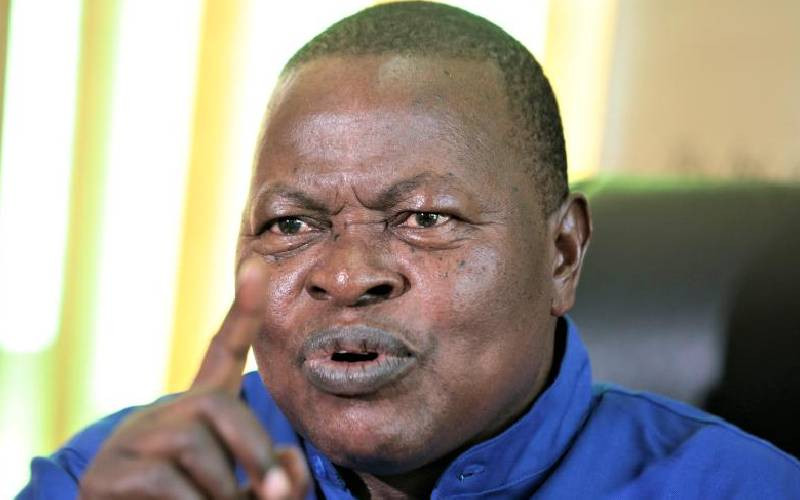When drafters of the East African Community (EAC) roadmap lined up key pillars for realisation of an economically prosperous, socially integrated and politically united East Africa, the inclusion of a monetary union was a masterpiece of forward-thinking.
The ultimate goal of a monetary union is the launch of a single currency. Any country or region with serious economic growth plans must continuously pay attention to its currency, weigh its strength in relation to prevailing global money market trends, and then embark on a transformation to boost its key economic sectors like trade and industry.
Though still long in projection, the anticipated attainment of a single currency for East Africa is expected to change the region’s economic trends and set in motion a more joint regional economic growth plan that should quickly bring good returns.
The journey towards a single East African currency kicked off in earnest on November 30, 2013 at the Commonwealth Speke Resort in Kampala Uganda, where the EAC Heads of State penned down the protocol for an East African Monetary Union.
The net import of this important stage in the EAC integration is that the partner states will now start working together in the implementation of various monetary policies designed to create synergy in their financial management systems.
The benefits the partner states stand to reap from the anticipated single currency are reduction in transaction costs associated with the exchange of currency by firms involved in import and export trade. Other benefits include promotion of regional trade and investment. Similarly, a single currency will guard against competitive devaluations which occur when one country devalues its currency in order to export more goods.
With a combined market standing at about 185 million people, East Africa is looking to consolidate its market, and the surest way of doing this is adoption of a single currency which, besides reducing speculation and uncertainty among the trading partners, also comes with credibility and ensures same value for trading partners.
Speculation often occurs whenever people anticipate that a currency would drop in value, and subsequently sell all their holdings in that type of currency.
With a single currency, the problems with exchange rate volatility would also be eliminated between partner states. The only remaining fluctuations will be between the EAC single currency and other currencies such as the Dollar, Sterling Pound and the Yen. However, in embracing the Monetary Union, East African partner states are alive to the inherent challenges of such a union, namely, loss of sovereignty of monetary policy and exchange rate policy, diversity of the economies of the members of the union, meaning different levels of efficiency, productivity, inflation and to some extent different structures, among other economic fundamentals.
To surmount these diversity challenges, a macro-economic convergence criteria framework, which is part of the EAC Monetary Union Protocol, has been developed and all partner states are expected to work towards the achievement of all the targets set by the year 2021.
Individual states that achieve the performance criteria will be expected to maintain and sustain it until 2024 for them to be allowed to join the single currency area.
The EAC Monetary Union protocol, now already ratified by all the EAC partner states, lines up a list of priority programmes and activity schedules that are expected to culminate in a single currency for East Africa by the year 2014. These include; Harmonisation and coordination of fiscal policies; harmonisation and coordination of monetary and exchange rate policies and adoption of common principles and rules for payments and settlements.
Similarly, a number of institutions and bodies shall be established to support the progress towards a single currency, and these include: the East African Monetary Institute, the East African Statistics Bureau, East African Financial Services Commission and East African Surveillance Compliance and Enforcement Commission.
The establishment of an East African Central Bank will come at the later stages of the protocol’s implementation, and when the single currency is already in sight.
Stay informed. Subscribe to our newsletter
Already, the EAC partner states have started angling to host some of these institutions, with Kenya in strong contention to host the East African Monetary Institute. As a region, we are looking forward to the implementation of the monetary union protocol so that East Africa can forge ahead economically, guided by the advantages of a single regional currency.
 The Standard Group Plc is a
multi-media organization with investments in media platforms spanning newspaper
print operations, television, radio broadcasting, digital and online services. The
Standard Group is recognized as a leading multi-media house in Kenya with a key
influence in matters of national and international interest.
The Standard Group Plc is a
multi-media organization with investments in media platforms spanning newspaper
print operations, television, radio broadcasting, digital and online services. The
Standard Group is recognized as a leading multi-media house in Kenya with a key
influence in matters of national and international interest.
 The Standard Group Plc is a
multi-media organization with investments in media platforms spanning newspaper
print operations, television, radio broadcasting, digital and online services. The
Standard Group is recognized as a leading multi-media house in Kenya with a key
influence in matters of national and international interest.
The Standard Group Plc is a
multi-media organization with investments in media platforms spanning newspaper
print operations, television, radio broadcasting, digital and online services. The
Standard Group is recognized as a leading multi-media house in Kenya with a key
influence in matters of national and international interest.








